Metabolic control of tobacco pollination ($)
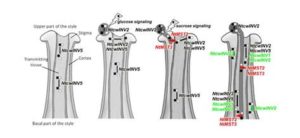 A germinated pollen grain extends a pollen tube through the stigma and style of the flower to deliver two sperm cells to an ovule. Tip-directed growth of the pollen tube requires a large energy input, but how does the pollen tube obtain energy while growing through the flower tissues? Goetz et al. investigated the roles of extracellular cell wall invertase (cwINV) enzymes in supplying energy to the growing pollen tube in N. tabacum. cwINVs break down sucrose into hexose sugars that can be transported into the pollen tube. In tobacco pollen, NtcwINV2 is postulated to regulate NtcwINV1 for control of sucrose breakdown, and RNA transcript levels for both NtcwINV1 and NtcwINV2 peaked in pollinated pistils. The authors found separate pollen tube import pathways for sucrose and hexose sugars formed by cwINV cleavage of sucrose, which are supported by in vitro pollen germination assays indicating glucose stimulates pollen germination while sucrose stimulates pollen tube extension. To show how hexoses can be imported into the pollen tube, the authors characterize two hexose transporters, NtMST2 and NtMST3. With in situ hybridization, NtMST2 and NtMST3 were detected in growing pollen tubes, and their expression patterns overlap with NtcwINV2. The authors present a model for NtcwINV enzymes and NtMST transporters cooperatively regulating the availability of sugars for pollen germination and tube growth. (Summary by Daniel Czerny) Plant Physiol.
A germinated pollen grain extends a pollen tube through the stigma and style of the flower to deliver two sperm cells to an ovule. Tip-directed growth of the pollen tube requires a large energy input, but how does the pollen tube obtain energy while growing through the flower tissues? Goetz et al. investigated the roles of extracellular cell wall invertase (cwINV) enzymes in supplying energy to the growing pollen tube in N. tabacum. cwINVs break down sucrose into hexose sugars that can be transported into the pollen tube. In tobacco pollen, NtcwINV2 is postulated to regulate NtcwINV1 for control of sucrose breakdown, and RNA transcript levels for both NtcwINV1 and NtcwINV2 peaked in pollinated pistils. The authors found separate pollen tube import pathways for sucrose and hexose sugars formed by cwINV cleavage of sucrose, which are supported by in vitro pollen germination assays indicating glucose stimulates pollen germination while sucrose stimulates pollen tube extension. To show how hexoses can be imported into the pollen tube, the authors characterize two hexose transporters, NtMST2 and NtMST3. With in situ hybridization, NtMST2 and NtMST3 were detected in growing pollen tubes, and their expression patterns overlap with NtcwINV2. The authors present a model for NtcwINV enzymes and NtMST transporters cooperatively regulating the availability of sugars for pollen germination and tube growth. (Summary by Daniel Czerny) Plant Physiol.



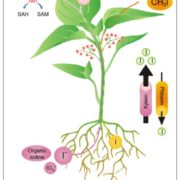
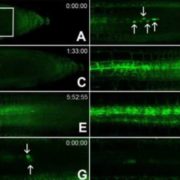

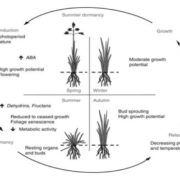
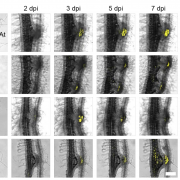


Leave a Reply
Want to join the discussion?Feel free to contribute!